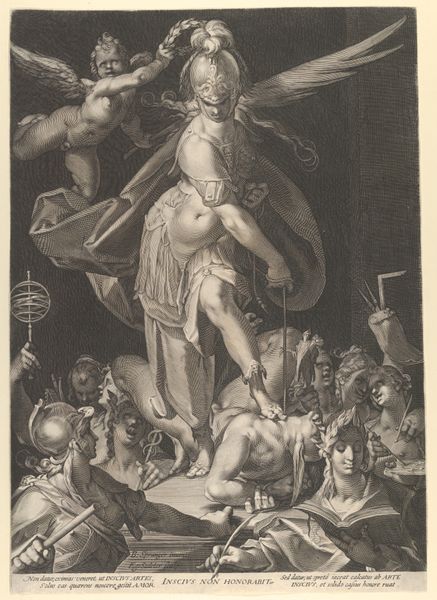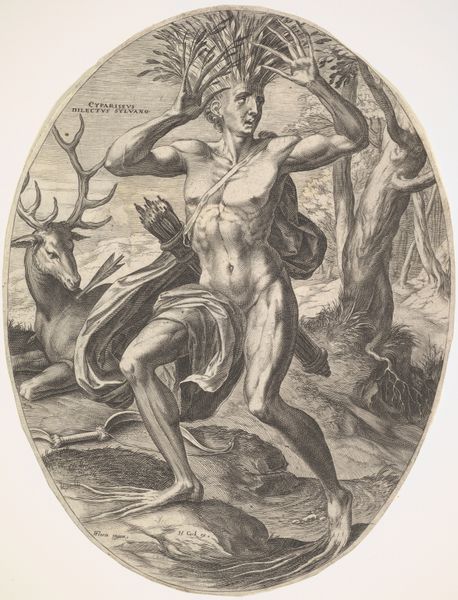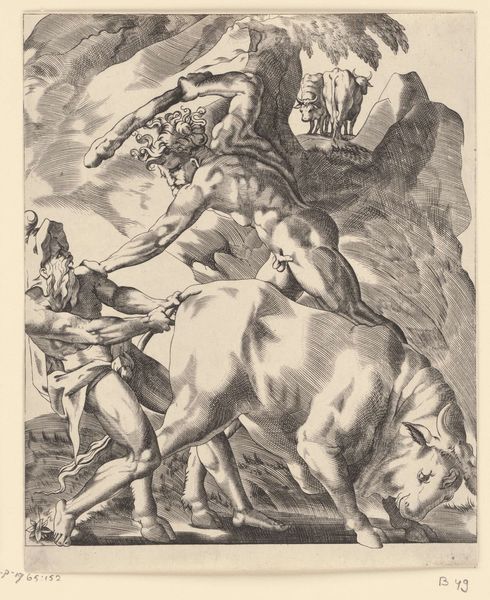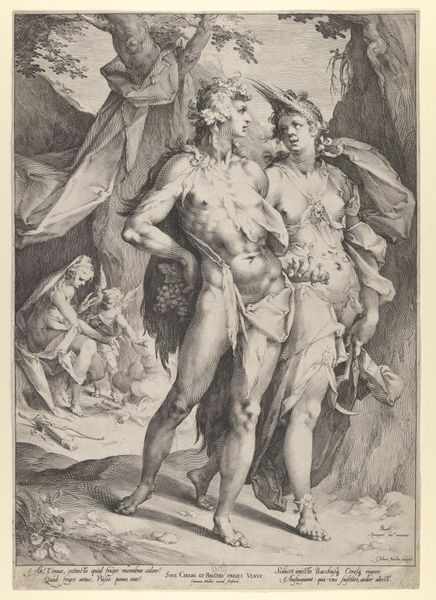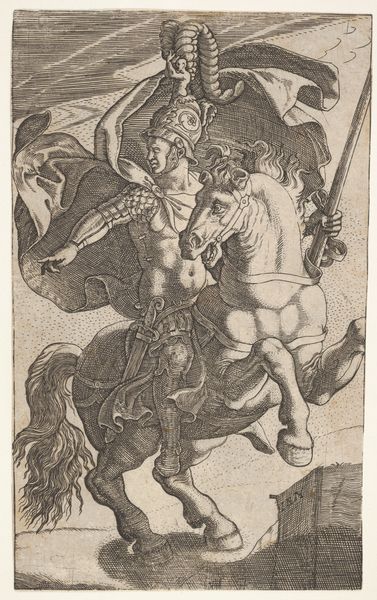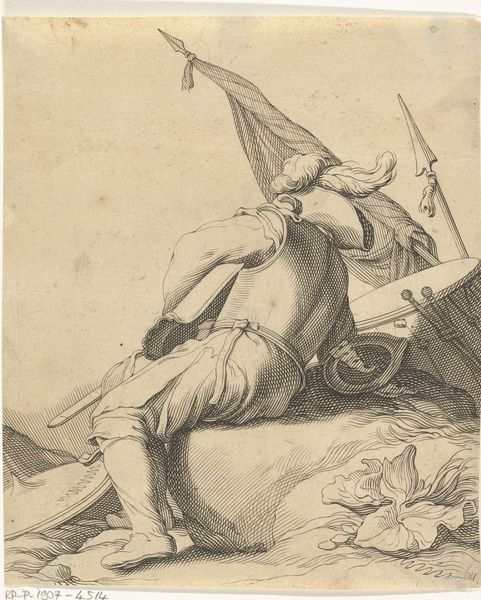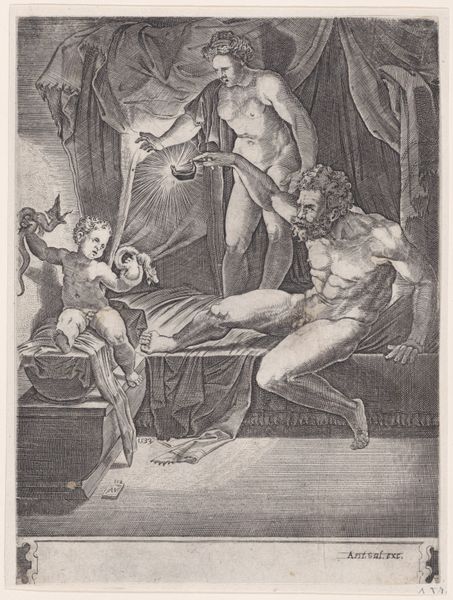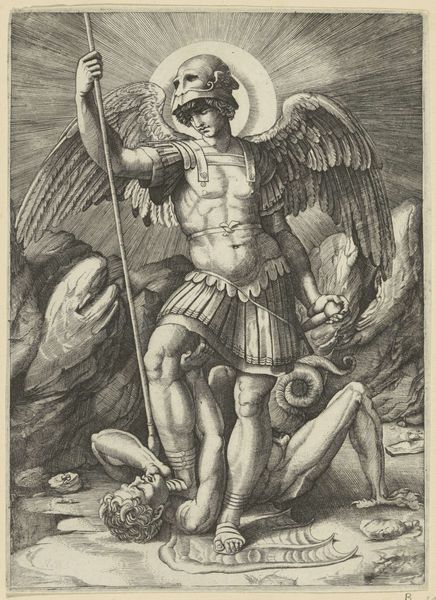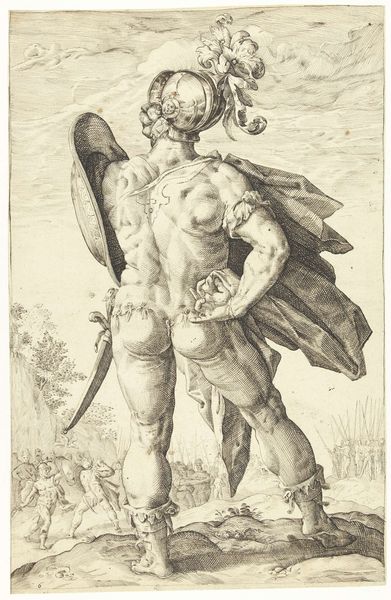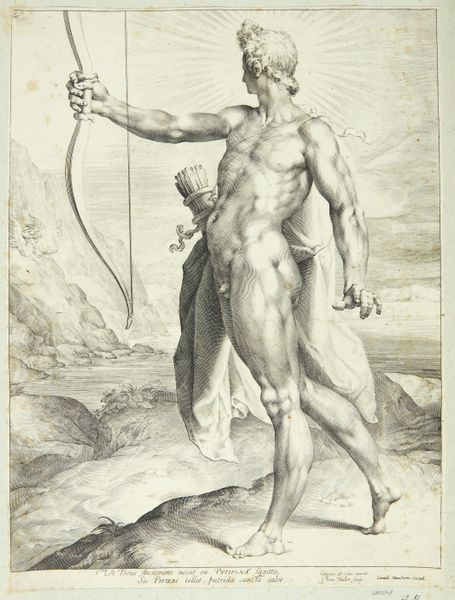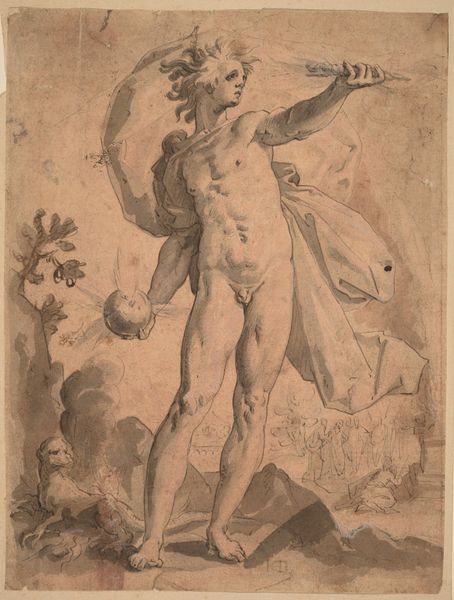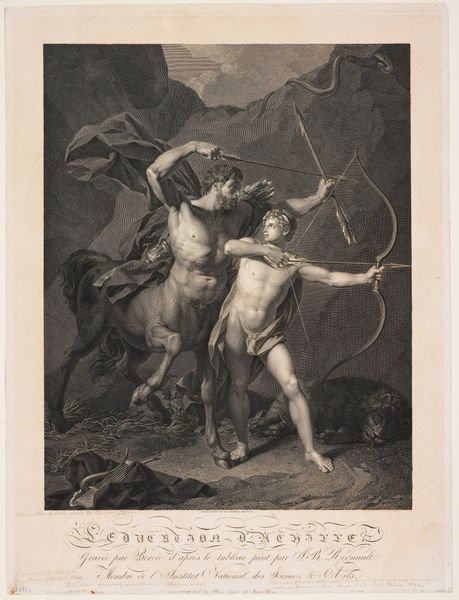
The Meeting of Sir Hüon of Bordeaux and Scherasmin in the Libanon Cave, from Wieland’s Oberon 1805
0:00
0:00
painting, oil-paint
#
night
#
allegory
#
narrative-art
#
painting
#
oil-paint
#
landscape
#
charcoal drawing
#
figuration
#
oil painting
#
romanticism
#
history-painting
Dimensions: 61 x 45 cm
Copyright: Public domain
Editor: So, this is Henry Fuseli's "The Meeting of Sir Hüon of Bordeaux and Scherasmin in the Libanon Cave," painted in 1805, using oil on canvas. I'm immediately struck by the dramatic lighting and almost theatrical figures. What’s your take on this scene? Curator: What intrigues me is the accessibility to art materials available at the time. Oil paint allowed for layering and blending that contributed to the visual drama you mentioned. The choice of oil paint, over fresco for example, implies a wealthy patron or art market capable of supporting this type of artwork. What about the sword that the character holds? Is it decorated? Are its edges clean? And is it suited for battle or as an allegory of some other means of societal change or preservation? Editor: I see what you mean. Looking closer, it's pretty plain. It almost seems symbolic, rather than functional. Are you suggesting that the artwork's significance is more about what it represents about that society than how pretty it is? Curator: Precisely! Consider the labor involved. Someone had to mine and process the pigments. Fuseli himself would have prepared his canvas, ground his colours. These processes were essential components of artistic production and economic drivers of the time, reflecting access to material resources. Also the type and availability of weaponry represents technological change and military-industrial resources during this period in time. Editor: So, instead of just focusing on the myth being portrayed, we can also analyze the socio-economic context that allowed this painting to even exist? Curator: Absolutely. And how that very means of material availability may shape what messages the art and allegory actually presents. Editor: That's a fascinating point! It completely changes how I view artworks. I hadn't considered that the creation of the art itself is a product of social and material conditions. Curator: It's a perspective that can deepen your understanding and appreciation significantly. Remember, art is not made in a vacuum. It is created in context.
Comments
No comments
Be the first to comment and join the conversation on the ultimate creative platform.
